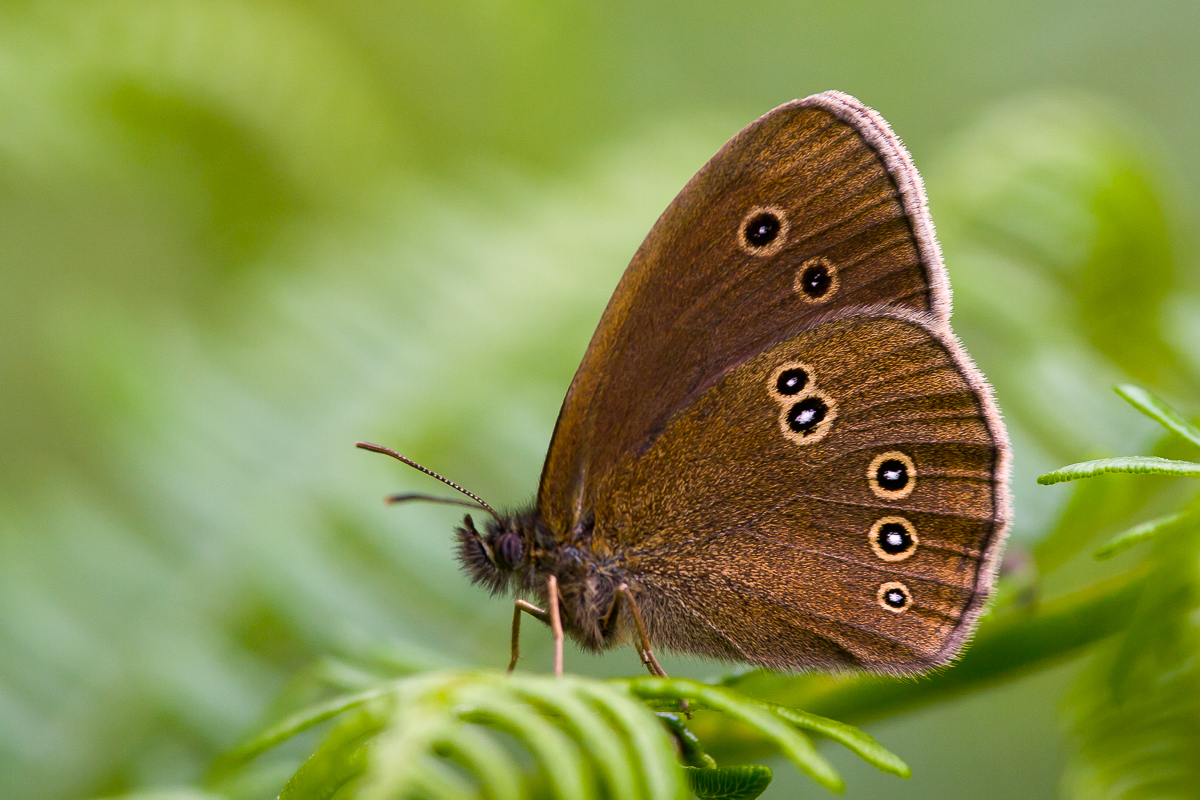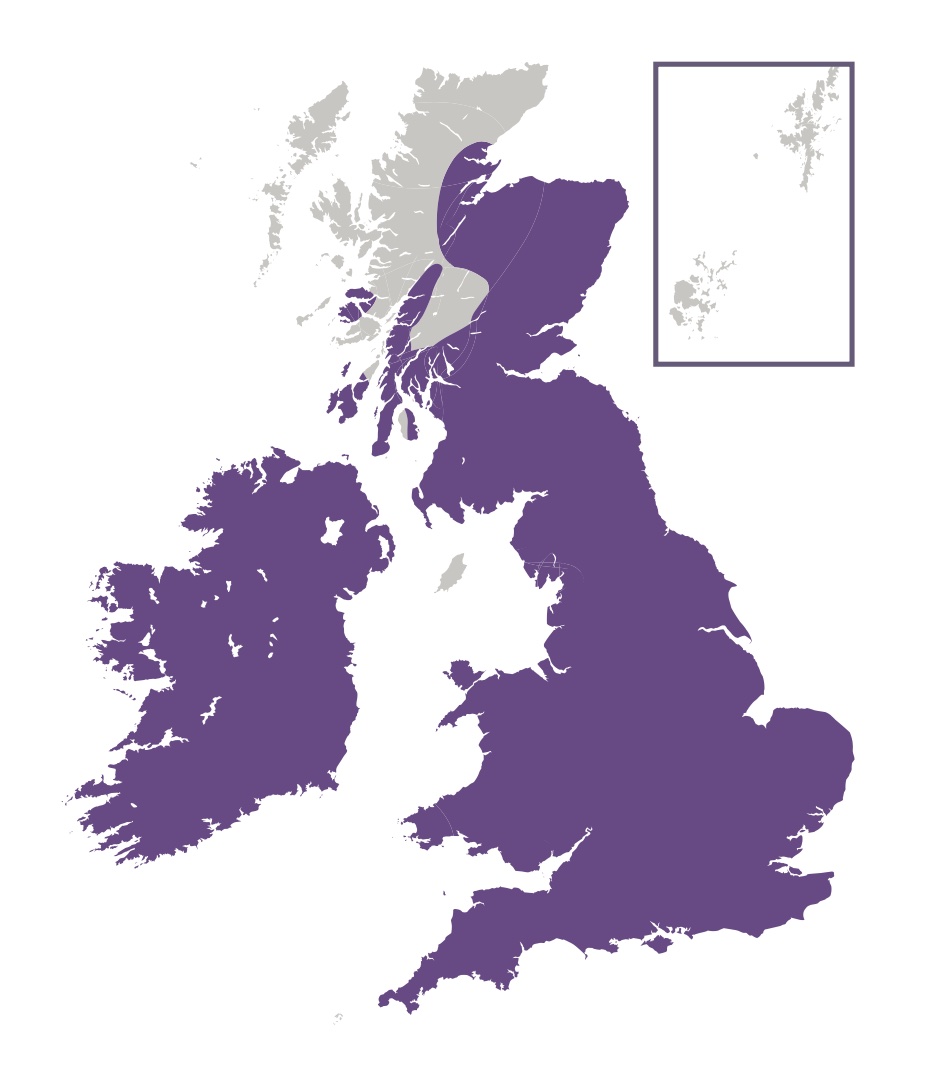
Photo © Peter Eeles
This is a relatively-common butterfly that is unmistakable when seen at rest - the rings on the hindwings giving this butterfly its common name. The uppersides are a uniform chocolate brown that distinguish this butterfly from the closely-related Meadow Brown. Despite this uniformity, a newly-emerged adult is a surprisingly beautiful insect, the velvety wings providing a striking contrast with the delicate white fringes found on the wing edges. The dark colouring also allows this butterfly to quickly warm up - this butterfly being one of the few that flies on overcast days.
Variation in this butterfly is primarily focused on the rings on the hindwings, the lanceolata aberration being particularly striking, where the rings are elongated to form teardrops. Other aberrations occur where the rings are greatly reduced or completely absent. Huggins (1959) also describes a form in Kerry, Ireland, that is of normal size until 600 feet, when it starts to be replaced by a dwarf form that, at 1,000 feet, takes over completely.
This butterfly can be found throughout most of the British Isles, south of a line between the South Ebudes in the west and Banffshire in the east. It is also absent from the western parts of northern England, north-west of the Midlands, the Isle of Man and the Channel Islands. This butterfly forms discrete colonies where numbers vary from a few dozen to several thousand.
Male and female are almost identical in appearance, although it is just possible to make out the feintest of sex brands on the forewings of the male, which contains special scent scales used in courtship. Males adopt an exclusive strategy of patrolling for mates and are often seen in ones and twos fluttering among the grasses that typify their habitat.
A mated female lays her eggs in a somewhat-chaotic fashion, typically perched on a grass stem and ejecting a single egg at random, often into the air, causing it to land in the vegetation. Both sexes take nectar from a variety of sources, Bramble and Thistle being particular favourites.

A variety of habitats is used, although sites characterised as being sheltered and damp are preferred, such as woodland clearings, woodland edges and rides, meadows, hedgerows, road verges and country lanes, where the full heat from the summer sun can be avoided and where the foodplant is lush. The butterfly is not typically found in open areas, such as grassland or heathland.
Adults feed primarily on brambles (Rubus spp.). Common Fleabane (Pulicaria dysenterica), Hemp-agrimony (Eupatorium cannabinum), Kidney Vetch (Anthyllis vulneraria), ragworts (Jacobaea spp.), thistles (Carduus spp. and Cirsium spp.), Wild Marjoram (Origanum vulgare) and Wild Privet (Ligustrum vulgare) are also used.
The primary larval foodplants are Cock's-foot (Dactylis glomerata), Common Couch (Elymus repens), False Brome (Brachypodium sylvaticum), meadow-grasses (Poa spp.) and Tufted Hair-grass (Deschampsia cespitosa).
